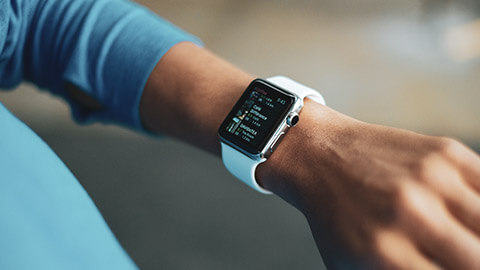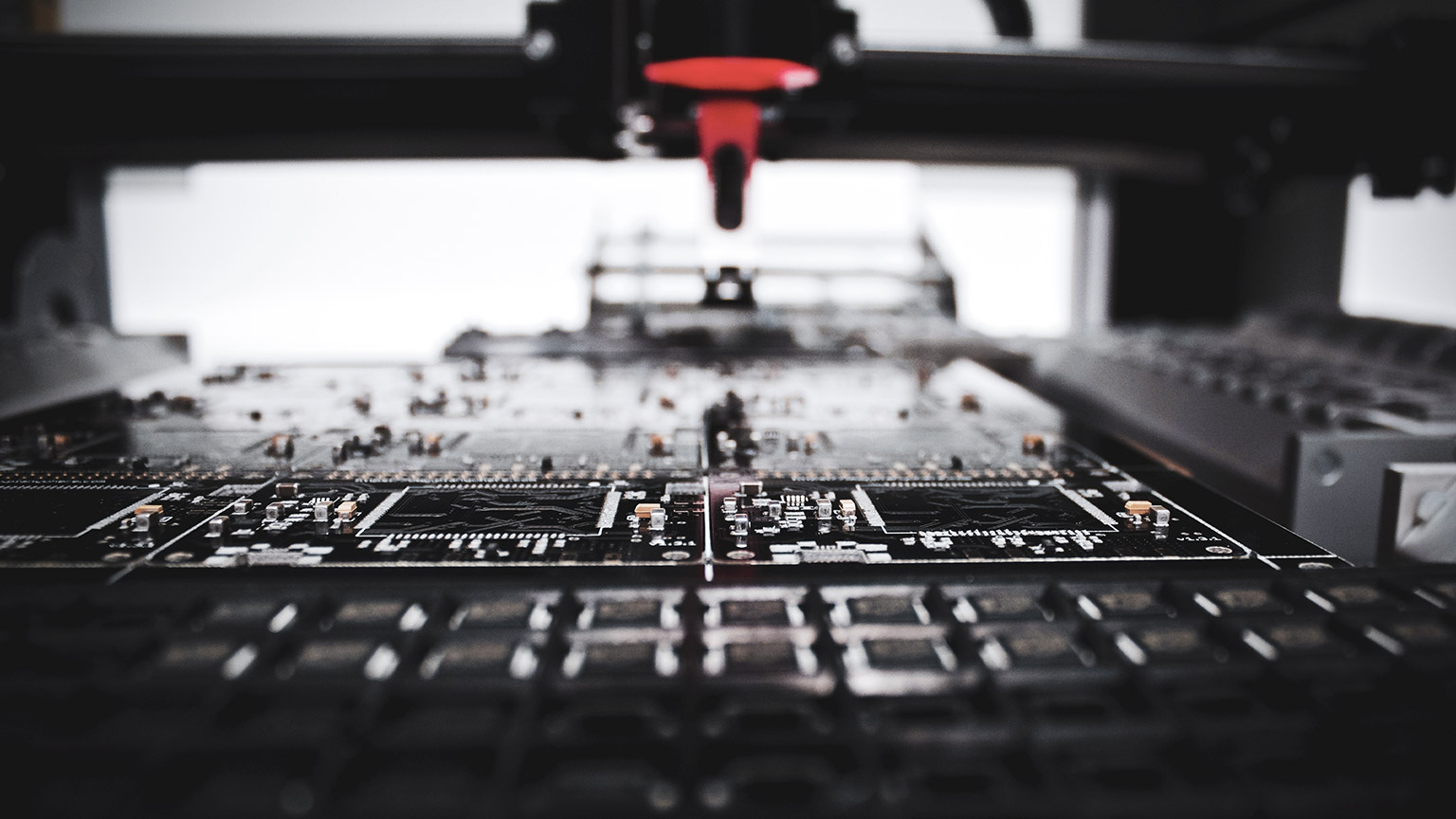In this topic we will explore how technology impacts global business. We are now able to communicate and collaborate instantly across the world. This means that businesses can employ a workforce that is located across different continents. Automation has led to changes in manufacturing and greater efficiencies in supply chains. Cloud technology enables the storage of information that can be accessed from anywhere. 3-D printing, the Internet of Things (IoT) and 5G are just some of the technologies that will determine what global business may look like in the future.
Welcome to Topic 8: Technology and Innovation for Operating Globally. In this topic, you will learn about:
- Examples of technologies and how they have impacted global business in the past
- The potential for new technologies to shape the future of global business
- The behaviour changes, risks and policy requirements which new technology may bring about
- The impact of technology on international relations.
These relate to the Subject Learning Outcomes:
- Explain the impact of globalisation on the business environment.
- Outline how global businesses are affected by the type of environment (legal, political, economic, financial and social-cultural) they operate in.
Welcome to your pre-seminar learning tasks for this week. Please ensure you complete these prior to attending your scheduled seminar with your lecturer.
Click on each of the following headings to read more about what is required for each of your pre-seminar learning tasks.
The following video introduces us to the exciting new opportunities that technology brings with it. Pay attention to the idea that the boundaries between the physical and digital worlds are blurring.
- Watch the video: World Economic Forum 2016, The Fourth industrial revolution at a glance.
- Pick one (1) of the following questions, spend some time researching this and write down your findings in your reflective journal:
- What role do you think governments have in the safe use of future technologies?
- What do you think the future of work could look like because of technology?
- How do you think technology could be used as a force for good?
- What do you think we could do in the future with the access to enormous amounts of data available to us through these new technologies?
You can access the reflective journal by clicking on ‘Journal’ in the navigation bar for this subject.
The following Special Report discusses in-depth the future potential of the internet of things (IoT). It compares findings from a report published in 2015 and is, therefore, able to reflect on predictions set out previously and track what has actually happened globally. You will need to register to download the Special Report.
Chui, M, Collins, M & Patel, M 2021, ‘The Internet of things: catching up to an accelerated opportunity,’ McKinsey.
- Read the findings section (pp. 8-20) of this report.
The following video discusses the impact of technological developments, predictions, and optimism around innovation. The video looks at how we can overcome the backlash related to technology created when it does not meet our hopes and expectations. An important observation made is that technology has no agency, but humans do. Agency is the ability to act independently and exert power. Technology lacks agency; this means we cannot associate good or bad to technology itself, but we need to look at how technology is governed and utilised in an ethical manner.
- Watch this video from The Economist, ‘Should we be worried about technology?’
- In your reflective journal:
- Note down what you thought of the video overall.
- Jot down the five (5) things that stood out for you
The following article looks at numerous examples of artificial intelligence. It also discusses the positive and negative aspects of artificial intelligence and considers some of the risks and governance requirements.
Pauwels, E 2018, The New geopolitics of artificial intelligence, World Economic Forum.
- Read the article.
- Think about the positive and negative impacts and what these might mean for global business. Be prepared to share your ideas in our seminar discussion.
This article summarises how technology has formed the globalised world of today, setting out some key examples of the current state of affairs with the aim of learning from these for the future.
Davies, N & O’Halloran, D 2018, The Fourth industrial revolution is driving globalization 4.0, World Economic Forum.
- Read the article.
Select one technology introduced in the last 50 years and present your findings to Discussion Forum 'Topic 8: Forum Activity 1'.
You can access the activities by clicking on the links in the topic. You can also navigate to the forum by clicking on 'BUS100 Subject Forum' in the navigation bar for this subject.
The following article looks at various companies that have used technology to get ahead of their competitors. Note that timing is identified as a crucial component to implementing technology and innovation; the wrong time to implement new technology could have devastating results for organisations.
Rogers, A 2018, Innovation case studies: how companies use technology to solidify a competitive advantage, Forbes.
- Read the article.
Assessment 3 – Review the assessment requirements and develop any questions you have for your lecturer. Select the country and the industry you will focus on and note down your approach to the assessment in your reflective journal, as this will be the basis of the individual student consultations this week. Collate relevant readings and reports for your report.
Read through this week’s topic content.

The potential for new technologies to shape the future of business
Let us take a closer look at the Internet of Things and the 5G network as two (2) technology examples, thinking about the potential for these to influence what business looks like in the future.
The Internet of Things
A fast-growing network, the Internet of Things refers to devices that can collect and exchange data with each other instantaneously. One example of this is the smart home, where it is now possible to control the appliances in our home electronically and through the internet. This means we can control and monitor appliances in our home, lighting, security computers, and so on either with a voice command from inside the house or remotely, regardless of where we are or what time it is. We can talk to voice assistance, play music, ask for the weather report, order dinner or arrange a ride. The boundaries between the digital world and the physical world are blurred through the interconnectivity of the Internet of Things (McKinsey 2021).

Another example is wearables. These are devices which can track the number of steps we take, our heart rate, and our blood pressure. As they become more sophisticated, the wearables will help track illness, notify users to take medicine, notify emergency services or medical professionals and even diagnose health conditions. In terms of services, wearables will enable personalised and tailored service delivery to its users. For example, entertainment providers, retailers, amusement parks, airlines, and vacation providers could tailor services to the users before they visit. Disney already uses this to customise the user experience before they even get to the amusement park (Thierer 2015).
In the transport sector, where downtime, expensive mechanical repairs, and delays negatively impact businesses, Volvo and Mack have equipped their trucks with thousands of sensors. These sensors monitor faults and identify issues with the major systems like the engine and transmission before something becomes critical. In essence, this reduces downtime and enables more efficient transportation. This also sends valuable information to the companies’ truck engineers, who can now fix issues and change the truck design to enable the best possible product development (Bylykbashi et al. 2021).
In the retail sector, examples are:
- inventory management, which tracks stock in warehouses
- automated order preparation and fleet management solutions that enable real-time tracking of deliveries
- sales data and predictive analysis, enabling us to forecast consumer behaviours.
Consumers can receive personalised service, track their orders from their personal devices, and feel more part of the process all the way through.
McKinsey (2021) has estimated that approximately 65 per cent of the estimated economic value of the Internet of Things can be achieved through business-to-business applications. They identified that by 2030, the economic potential of the Internet of Things could be $5.5 to $12.6 trillion globally (McKinsey 2021). Business-to-business (B2B) are transactions between different businesses; for example, business conducted between a manufacturer and a wholesaler or a retailer and a wholesaler.
One of the biggest challenges for businesses will be implementing the technology in the right way and at the right time to capture this potential. When it comes to standardised work environments such as factory settings, corporations have huge benefits to increase efficiencies and utilise data to enable better design and decision-making. It has been determined that manufacturing is the setting with the largest potential economic gain through implementing the Internet of Things (McKinsey 2021).
Watch this video for IoT insights into how factories can optimise operations and help to manage physical assets: Outlook for the IoT in the factory setting.
5G Network

We have seen rapid development from the launch of the first mobile receivers in the 1980s to the introduction of smartphones and wearables.
The internet has led to rapid digitalisation. Current infrastructure investment in 5G technology is expected to bring further changes. The rate that data can be exchanged through this new enhanced mobile broadband will lead to speeds ten times faster than what we have today (Mariani & Bertolli 2019). Another aspect of this network is its low latency communication abilities, which means that there is minimal delay. Reducing delays will enable further development of technologies such as self-driving autonomous vehicles or successful implementation of medical robots. The huge number of devices that are part of the Internet of Things all exchanging data simultaneously also benefit from this 5G technology.
Behaviour changes, risks and policy requirements

As technology develops and it becomes more pervasive in our lives, we need to consider its effect on an ethical and behavioural level.
In a world where there are more devices than people and our reliance on those devices is increasing, we also see human behaviour patterns change. We now use technology to communicate with family and friends. We use algorithms to find a potential partner. We arrange for our groceries to be dropped off, our meals to be delivered, and consume entertainment through our devices, regardless of where we are. How does this hyper-connectivity influence our behaviours?
With the increase in digital technology and our reliance on it, there is growing concern about security. Large amounts of data need to be kept safe, along with an increasing number of connectivity points. This gives rise to increasing levels of data vulnerability and faces increasing threat by rising levels of data hacking. As a result, cyber security is growing in awareness for consumers, businesses and governments.
How digital technology and data collection impact privacy is another area of concern. Should we be recording all of the consumer behaviour patterns? Should there be facial recognition built into all security cameras in public places? Should all our individual movements be tracked?
Another consideration, especially pertinent to global business, is how privacy and data collection may have legal implications and be subject to new policy and international agreements. This could impact the way that global business operates, the legal requirements they need to have in place, as well as what corporations can and cannot do in integrating this technology.
International agreements and relations
Competition between countries can be beneficial to the development of new technologies. This results in more research and development, which can fast track technology and innovation as countries learn from one another. On the other hand, this competition can also lead to fraught relationships between countries and restrictions that limit global businesses.
The competition between China and America, in terms of technology, is a key example. Lewis (2021) notes that the United States is not moving quickly enough or investing enough in technology and innovation to stay ahead of China. These concerns have been raised as a national security risk. Another impact on the relationship between the two (2) countries, is that China has banned access to numerous global websites, including five of the top 30 global websites. This creates a barrier to digital trade from outside China. It also restricts access to VPNs which further strengthen the restrictions on external websites. In a world where so many of the transactions are processed digitally, online retail is prominent, and the consumption of digital content is key. The restrictions have a huge impact in terms of access to the Chinese consumer market. Manning (2018) notes that this restriction abstracts potential business from the United States.
Knowledge check
Key takeouts
Congratulations, we made it to the end of the eighth topic! Some key takeouts from Topic 8:
-
The boundaries between the digital world and the physical world are blurred through innovative technology and hyper-connectivity.
-
Competition between countries can be beneficial to the development of new technologies, and fast-tracks technology and innovation as countries learn from one another.
-
Technology can also lead to fraught relationships between countries, as well as restrictions that limit global businesses.
-
As technology develops and it becomes more pervasive in our lives, we need to consider the effect it may have on an ethical and behavioural level.
Welcome to your seminar for this topic. Your lecturer will start a video stream during your scheduled class time, you can access your scheduled class by clicking on ‘Live Sessions’ found within your navigation bar and locating the relevant day/class or by clicking on the following link and then click 'Join' to enter the class.
Click here to access your seminar.
The learning tasks are listed below, these will be completed during the seminar with your lecturer. Should you be unable to attend, you will be able to watch the recording which can be found via the following link or by navigating to the class through ‘Live Sessions’ via your navigation bar.
Click here to access the recording. (Please note: this will be available shortly after the live session has ended.)

In-seminar learning tasks
The in-seminar learning tasks identified below will be completed during the scheduled seminar. Your lecturer will guide you through these tasks. Click on each of the following headings to read more about the requirements for each of your in-seminar learning tasks.
Reflecting on the forum posts you completed as part of the self-directed learning, discuss in your groups what we can learn from technology during the previous 50 years, sharing your individual examples.
Based on the self-directed learning tasks, discuss the risks associated with technology. Your lecturer will provide some guiding questions for you to explore in your breakout rooms.
Welcome to your post-seminar learning tasks for this week. Please ensure you complete these after attending your scheduled seminar with your lecturer. Your lecturer will advise you if any of these are to be completed during your consultation session.
Click on the following heading to read more about the requirements for your post-seminar learning task.
Think about this week’s topic. Do you have any questions that you would like your lecturer to elaborate on? Please send them to your lecturer prior to the next seminar.
Each week you will have a consultation session which will be facilitated by your lecturer. You can join in and work with your peers on activities relating to this subject. These session times and activities will be communicated to you by your lecturer each week. Your lecturer will start a video stream during your scheduled class time, you can access your scheduled class by clicking on ‘Live Sessions’ found within your navigation bar and locating the relevant day/class or by clicking on the following link and then click 'Join' to enter the class.
Click here to access your seminar.
Should you be unable to attend, you will be able to watch the recording which can be found via the following link or by navigating to the class through ‘Live Sessions’ via your navigation bar.
Click here to access the recording. (Please note: this will be available shortly after the live session has ended.)

- Thierer, A 2015, ‘The internet of things and wearable technology: addressing privacy and security concerns without derailing innovation’, Richmond Journal of Law & Technology, XXI(2):1-118.
- World Economic Forum 2020, 'Facilitation 2.0 Trade and Investment in the Digital Age', Insight Report October 2020.
References
- Bylykbashi, K, Qafzezi, E, Ampririt, P, Ikeda, M, Matsuo, K & Barolli, L 2021, ‘Effect of vehicle technical condition on real-time driving risk management in Internet of Vehicles: Design and performance evaluation of an integrated fuzzy-based system,’ Internet of Things, 13:100363.
- Davies, N & O’Halloran, D 2018, The Fourth industrial revolution is driving globalization 4.0, World Economic Forum, https://www.weforum.org/agenda/2018/11/the-fourth-industrial-revolution-is-driving-a-new-phase-of-globalization/
- Lewis, J 2021, Linking national security and innovation: Part 1, Center for Strategic and International Studies (CSIS), http://www.jstor.org/stable/resrep31134
- Manning, R 2018, ‘Beyond Bilateral: Global Governance Deficit of Emerging Technology,’ The China Challenge to an Inclusive Asia-Pacific Regional Trade Architecture, Atlantic Council, http://www.jstor.org/stable/resrep20934.9
- Mariani, L & Bertolini, M 2019, ‘The US–China 5G contest: Options for Europe’ Istituto Affari Internazionali (IAI), 19(16):1-25, http://www.jstor.org/stable/resrep19676
- Pauwels, E 2018, The new geopolitics of artificial intelligence, World Economic Forum, https://www.weforum.org/agenda/2018/10/artificial-intelligence-ai-new-geopolitics-un/
- Rogers, A 2018, Innovation case studies: how companies use technology to solidify a competitive advantage, Forbes, https://www.forbes.com/sites/forbestechcouncil/2018/04/13/innovation-case-studies-how-companies-use-technology-to-solidify-a-competitive-advantage/?sh=4159ea971410
- The Economist 2021, Should we be worried about technology?, streaming video, YouTube, youtube.com/watch?v=Zeza83WlXxg
- World Economic Forum 2016, The fourth industrial revolution at a glance, streaming video, YouTube, https://www.youtube.com/watch?v=KP9sMNwf6zw

